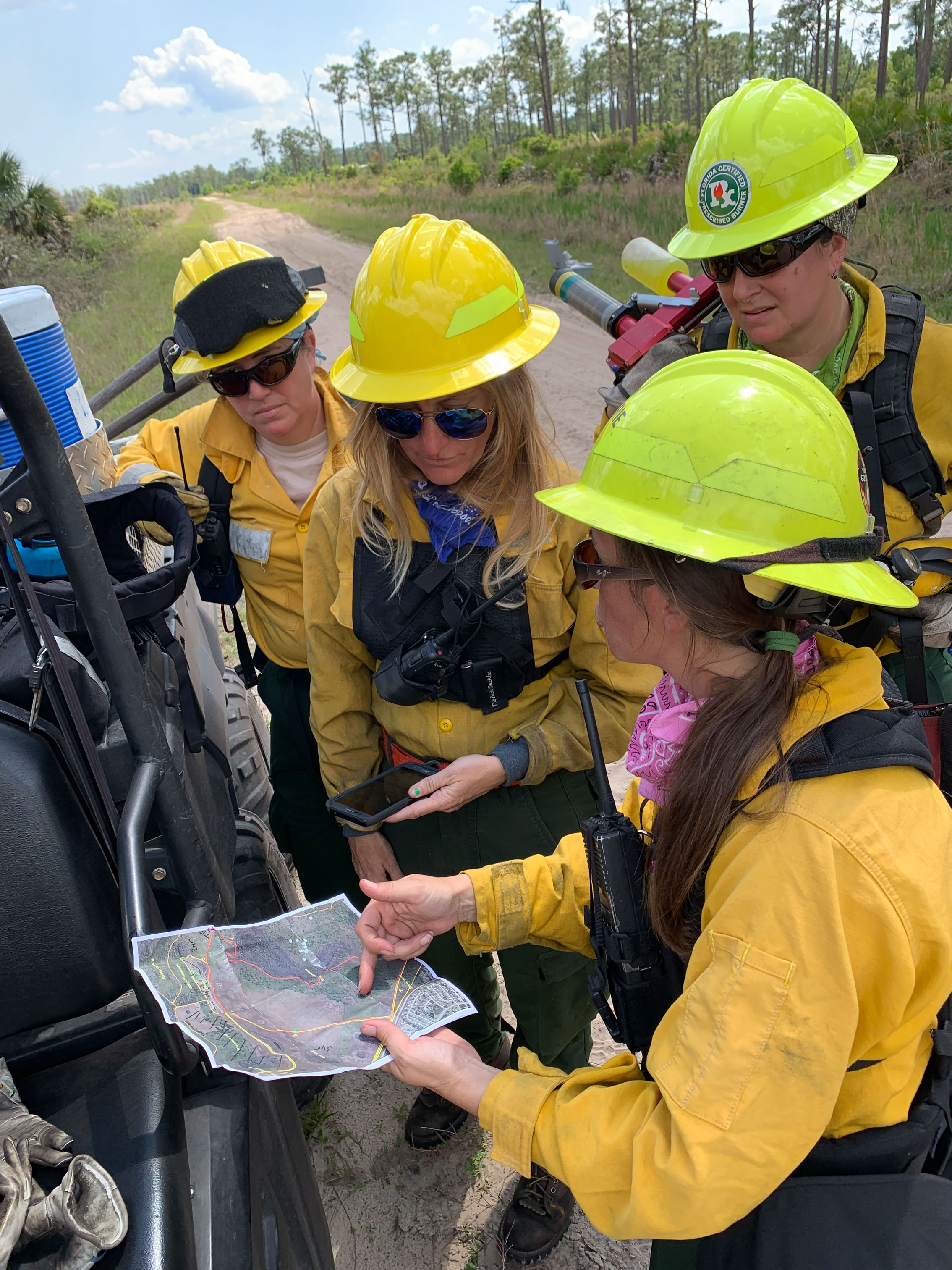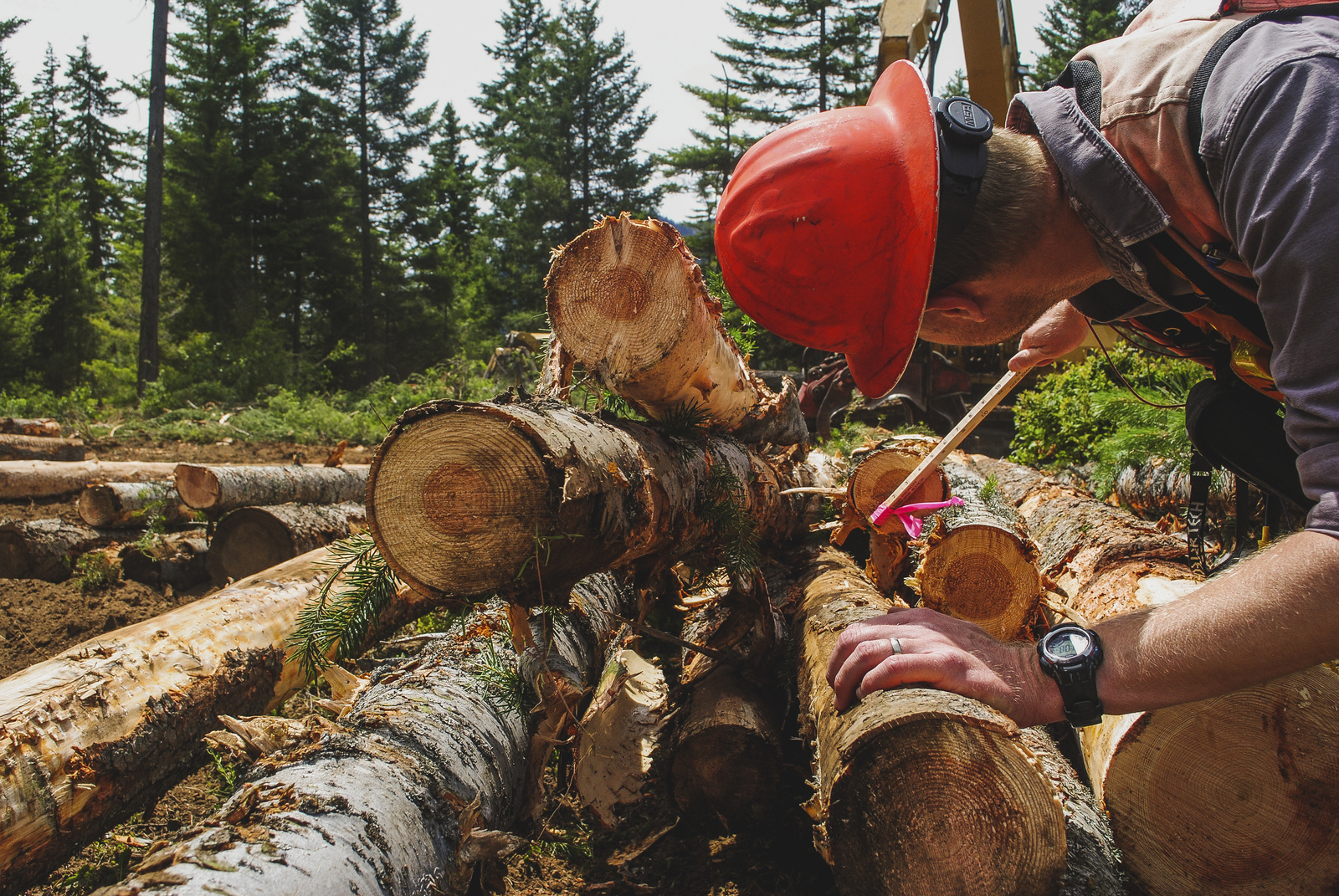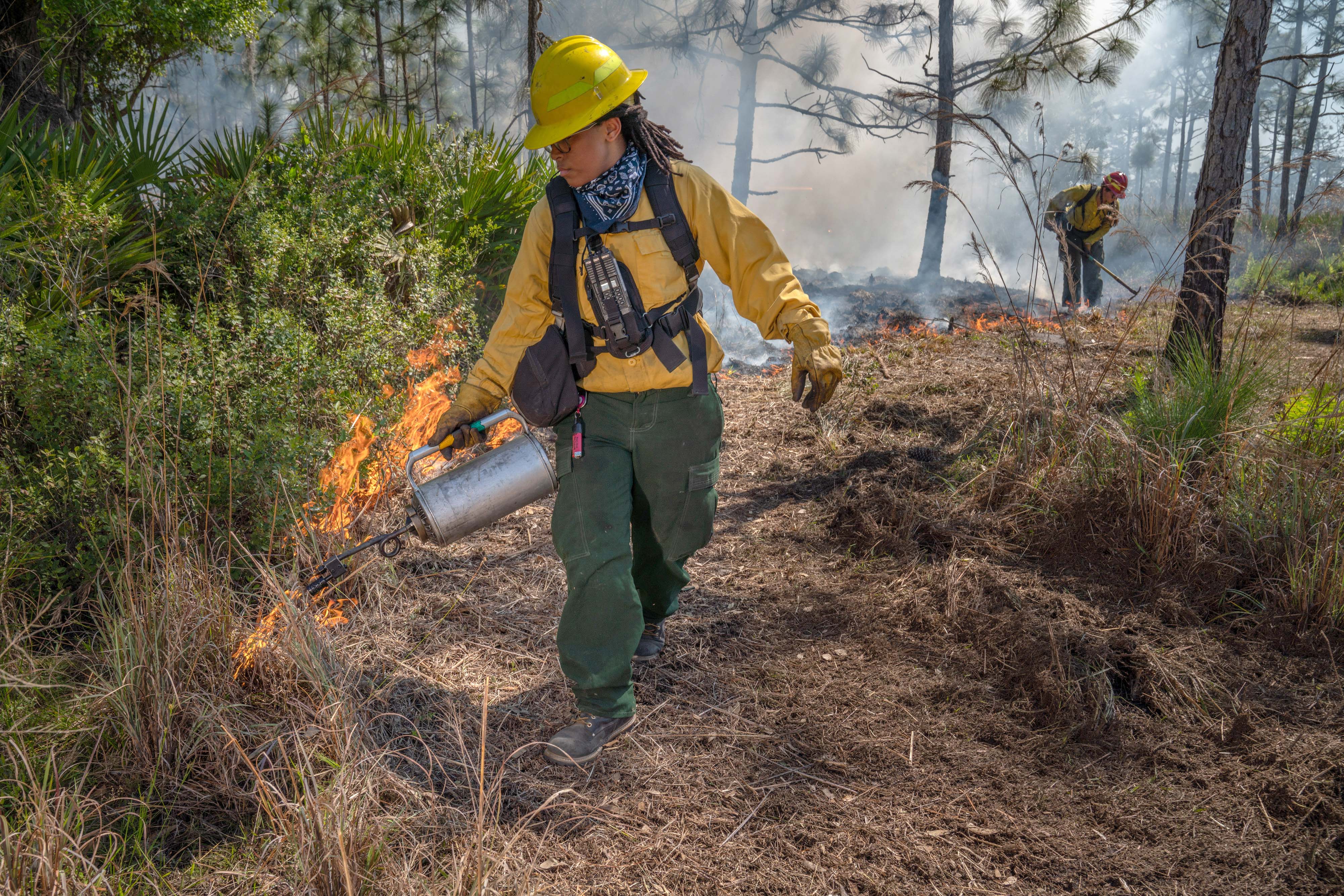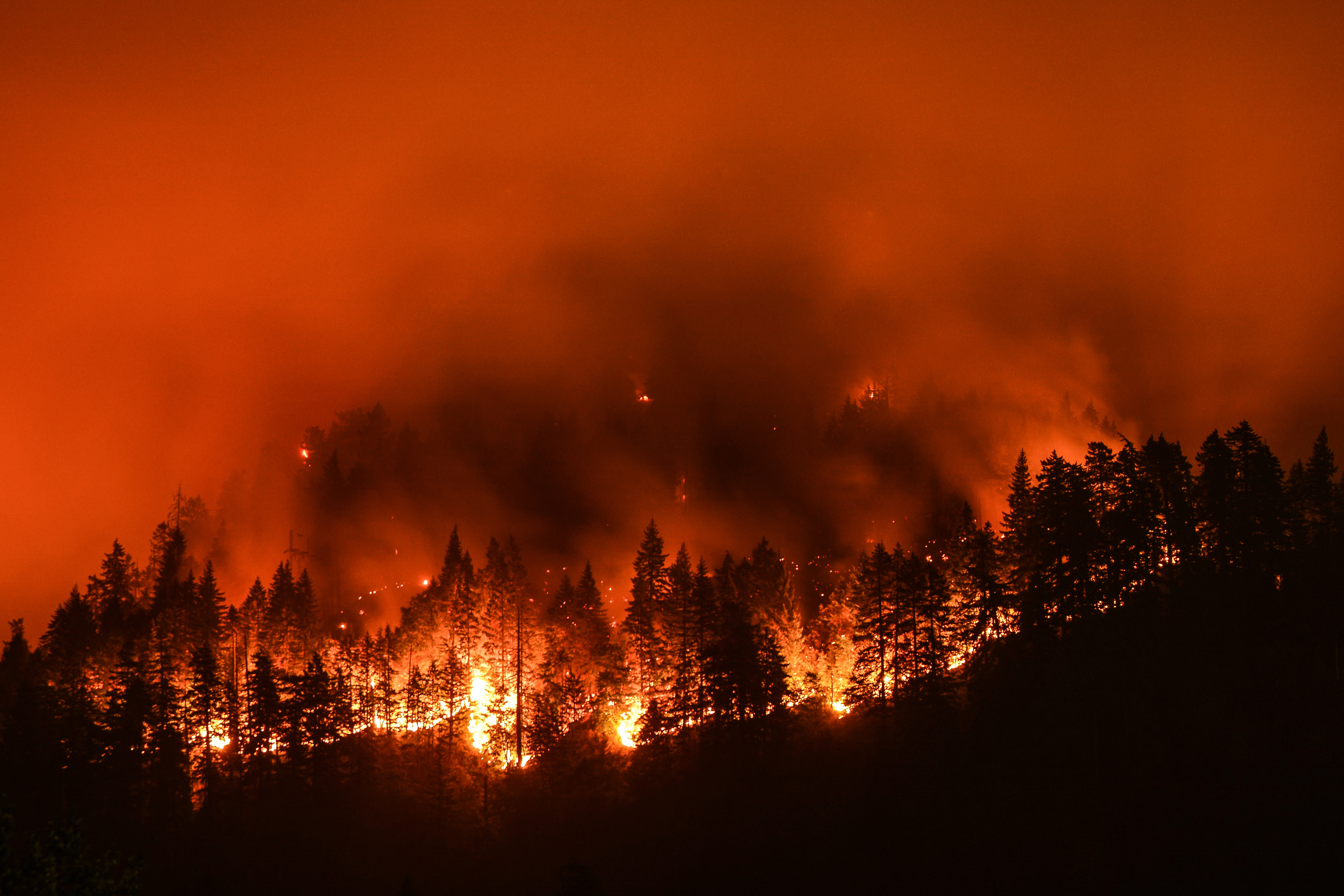The Wildfire Funding Breakdown: Time to Change the Paradigm
By Lynn Scarlett, Former Chief External Affairs Officer
The U.S. wildfire season once again is already in full swing. With severe drought through much of the American West and years of vegetation build up leading to high levels of fire risk, recent fires are a precursor of what looms ahead. Our thoughts are with people and communities threatened by wildfires that get bigger, more numerous and more devastating with each passing year.
But thoughts aren’t enough. The routine of increasingly catastrophic wildfires has become an all too predictable and disastrous cycle.
Strategies for a Paradigm Shift
TNC's Recommendations for Wildfire Resilience Funding
See Our ReportWe need bold, transformative policy action to reduce risks of these catastrophic wildfires. We need a paradigm shift in our investments in forests to reduce risks of catastrophic wildfires, and in communities to ensure that they are more resilient and better equipped to deal with wildfires.
Addressing this challenge over the next 10 years requires an investment surge of $5 billion to $6 billion per year for the highest priority work of reducing wildfire risks and providing communities with much-needed resources for infrastructure and adaptation.
In consultation with experts on wildfire science, policy and practice – from various agencies, researchers, and other organizations – we have specific recommendations for significant investments in federal programs. But we also need increased awareness that these investments will avoid other costs and create co-benefits, such as jobs, economic opportunities, and healthy lands and waters. A holistic, strategic approach must address the scale of need; an incremental path simply cannot succeed.
Quote
A holistic, strategic approach must address the scale of need; an incremental path simply cannot succeed.
Attaining greater resilience to wildfires is achievable. Almost all of the continent's ecosystems need fire at regular intervals to be healthy. But decades of fire suppression have altered many of these lands, allowing the buildup of dense vegetation and raising the risks of larger, more devastating fires.
These risks and costs increase each year. Fueled by climate change and increasingly prolonged drought, wildfires continue setting records across the western U.S. as the most damaging and costly in modern times. Last year, some 10.3 million acres burned in the U.S., costing at least 46 lives and nearly $20 billion in damages. And there are costs of health effects from smoke, as well as disruption of supply chains, transportation and labor—costs often disproportionately borne by those with low incomes with few or no means to recover from wildfires.
While the risks and costs of these fires have grown, U.S. investment in wildfire resilience has lagged. Federal funds have prioritized the suppression of wildfire at the expense of mitigating pre-fire risks. Resources to address the growing costs of suppressing wildfires for many years were taken from the U.S. Forest Service's operating budget, leaving the agency lacking resources to manage our national forests and contributing to a worsening of the underlying risks. Congress partially fixed this issue in 2018 by creating a wildfire disaster fund that the Forest Service and Department of the Interior can tap into. While this fix went a long way toward stabilizing the agency budgets against increasing suppression costs, it did far too little to address low funding for wildfire resilience.
To significantly reduce wildfire risks in the highest risk areas, new fire scenario modeling from the Forest Service suggests reducing overly dense vegetation on 20 million acres of national forest system lands in the West, 650,000 acres of national forest lands in the East, and 30 million acres of all other lands throughout the country.
Quote
Current strategies and levels of investment are leaving us further and further behind.
To meet this challenge, our new report, "Wildfire Resilience Funding: Building Blocks for a Paradigm Shift," identifies funding and priority needs for several federal agencies and programs. These include programs of the U.S. Forest Service, Department of the Interior, Federal Emergency Management Agency, Department of Defense, Environmental Protection Agency, Department of Energy, and others.
This won’t be easy, but the benefits are many. Increased investments and improved focus on enhanced forest health, forest restoration and other strategies will reduce the risks of catastrophic wildfires and result in jobs, economic opportunities, and healthier air, lands and waters.
Realizing those benefits will require a comprehensive approach to improve America’s wildfire resilience – one with input and efforts from all levels of government, the private sector, communities, and other stakeholders – and The Nature Conservancy and the Aspen Institute are launching a collaborative discussion series to drive that approach.
Current strategies and levels of investment are leaving us further and further behind. It is time to change the paradigm and create a new trajectory for how we manage and prepare for wildfire impacts on our country and communities.
Originally Posted in Politico
July 12, 2021
Wildfire Resilience Funding Report
-
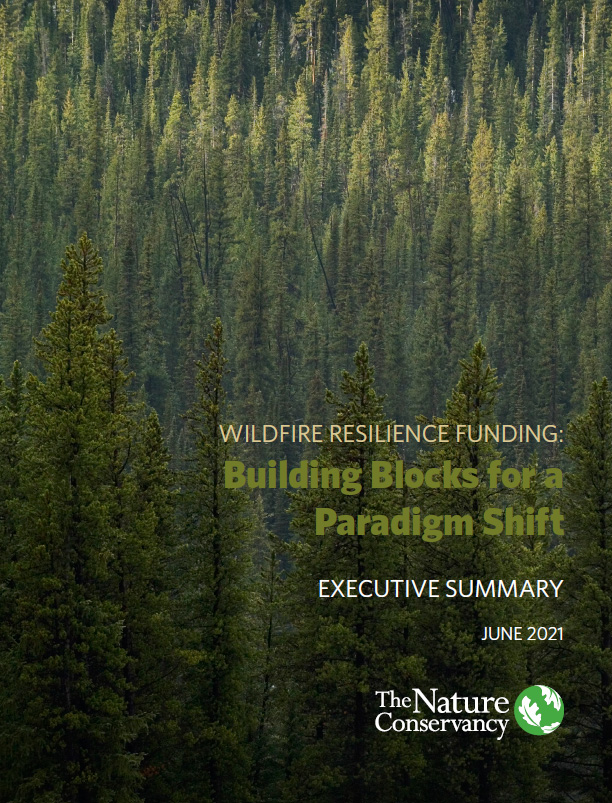 Wildfire Resilience Funding (Executive Summary)
Wildfire Resilience Funding (Executive Summary)Wildfire Resilience Funding: Building Blocks for a Paradigm Shift
DOWNLOAD -
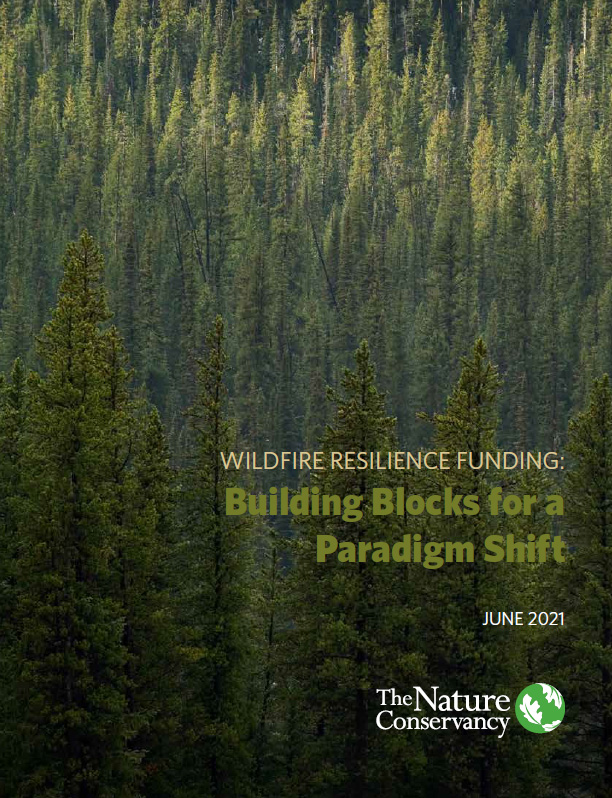 Wildfire Resilience Funding (Full Report)
Wildfire Resilience Funding (Full Report)Wildfire Resilience Funding: Building Blocks for a Paradigm Shift
DOWNLOAD
Global Insights
Check out our latest thinking and real-world solutions to some of the most complex challenges facing people and the planet today.


